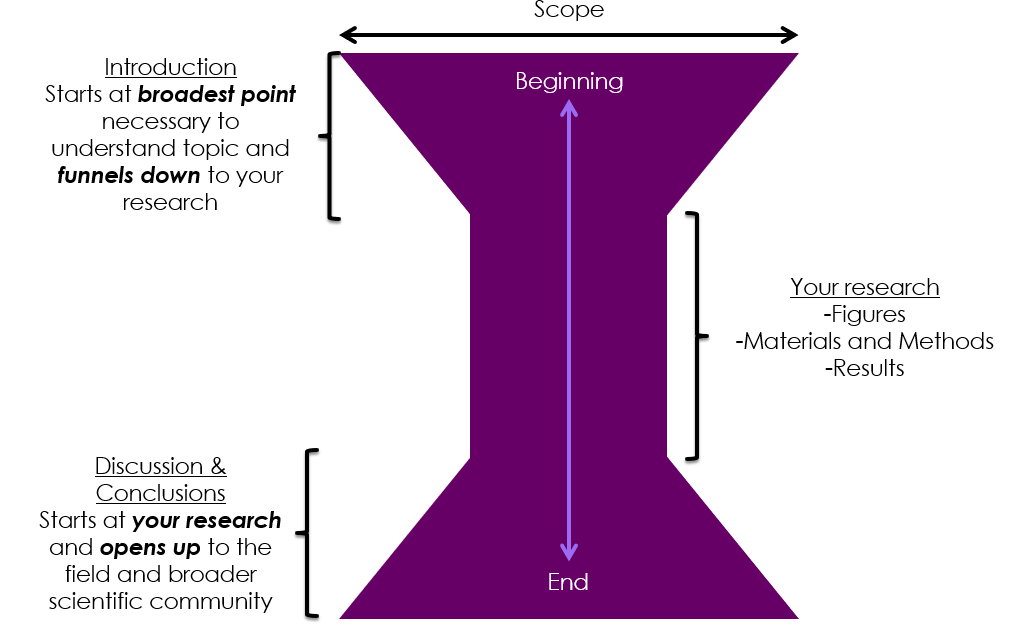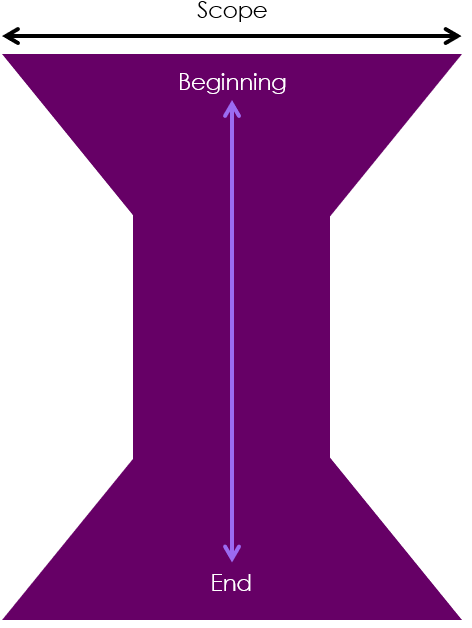We’ve all been there – staring at the blinking cursor on our all-too-white Word document waiting for inspiration to strike. Blank-page syndrome in manuscript preparation can lead to enormous amounts of wasted time and word-vomited first drafts that require significant editing overhauls. Fortunately, the order in which you draft your manuscript can be one of the best techniques for avoiding this and can save a lot of time and energy in the long run.
The right order can focus your thoughts and provide a map for how to best “flow” from one section to another.
This post provides an ordered list for the most efficient way to draft your manuscript and explains why this order is the most efficient.
To start, lets first start with an overview of the typical manuscript structure for scientific journal articles.
Most scientific journals prefer the IMRAD structure:
Introduction
- Why did you do this research?
- What was the original hypothesis?
Methods
- When, where, and how did you do this research?
- What materials or subjects were involved?
Results
- What did you discover?
- Was the tested hypothesis true?
and
Discussion
- What do your results mean?
- How does this fit within the field?
- What are the future prospectives?
While not necessarily following how research is actually conducted, the IMRAD structure presents a logical flow of ideas from the wide field down to the narrow hypothesis and research scope, and back out to the field-at-large. Because of this, this format and slight variations of it have come to dominate scientific journal formats, so chances are if you are writing a science paper, you will be familiar with this layout.
As mentioned above, from the beginning of the paper to the end, the scope starts wide in the introduction, narrows at your research methods and results, and widens out again through the discussion and conclusion. Or, represented visually as this hourglass shape:

How does knowing this help write a manuscript draft?
Every writer has gotten stuck drafting a manuscript at some point or other and realizes how painful this can be.
Luckily, the most common cause of “blank-page syndrome” is an attempt to draft a manuscript in an inefficient order.
The easiest parts to discuss of anything are the most familiar ones. When looking at the scope of a paper in the graphic above, it is easy to see where in a manuscript the easiest parts to write are located – the narrowest region that intimately discusses the work that was done.
Unfortunately, way too many manuscript writers start at the beginning and work their way to the end, which can lead to writer’s block and a lot of “blank-page syndrome” when trying to give background on a story that isn’t yet fully formed. The much more efficient place to start would be the part that you, as the writer, are most familiar with, which occurs in the narrow region of our hourglass.
Starting the paper at the introduction (or worse, the title or abstract!) is putting the cart before the horse. The story of your manuscript is your research, nothing more and nothing less.
Writing the abstract or introduction before having the story itself cemented is not only significantly more difficult but can also lead to a disjointed or confusing manuscript.
At the very least, it will be hard crafting a compelling abstract or introduction that should place the work into context without knowing exactly what will be said about the work.
So if I shouldn’t start my draft from the beginning, where do I start?
As already mentioned, the easiest parts to write are those most familiar to the writer. Even better, though, once these familiar parts are written, the more difficult parts become much more approachable.
Therefore, it becomes obvious that the most efficient place to start your draft is actually in the middle – at the experiments that were done and what you, as a scientist, learned from these experiments.
Most efficient writing order
- Figures – Starting the paper with the figures forces an organizational structure and a story. By first assembling data into 4-8 concise figures that follow a logical order, the story and scope of the paper is set.
- Materials and methods – With the figures in place, it now becomes simple to write the first section of paper text, which will be the materials and methods required to collect the data that compose the figures. Conveniently, this is also the part of the work that should be the most familiar and therefore easiest to write, as it is the hands-on part of the work that you did and were intimately acquainted with on a daily basis.
- Results – Following logically from the materials and methods, the results describe what was seen and discovered when performing the experiments discussed in the materials and methods, and writing this section flows easily from that.
- Discussion – Often drafted simultaneously with the results section, the discussion provides the reader with a sense of what your results mean and how they fit into the context of the field – widening the scope of the paper back out. For that reason, after a section of the results are written, it is then much easier to ponder these results and draft a brief description of what they tell you and why they are important.
- Introduction – After the discussion is written, it becomes obvious what the key points of the research are, what background of the field is required knowledge for the reader to understand the research and place it into context, and what competing or collaborating results in the field have recently shown. This makes writing the introduction AFTER the discussion is already composed a very simple exercise of essentially filling-in-the-blanks, which consists of inserting details about the relevant information required to understand the discussion.
- Conclusion – The conclusion is written after the discussion had been laid out, and this section does not summarize the results but tells the reader exactly why this research matters and why it is important to the field. It should take what the information from the discussion and show why those discoveries are important and the impact they have on science…ie., why is it worth publishing and reading this paper? Additionally, the conclusion should flow smoothly from the introduction, showing the reader how the questions about holes in the field that were posed in the introduction were addressed in this paper.
- Title and Abstract – These parts are the final touches of the paper – essentially a cover sheet to the manuscript that is designed to attract attention and interest. The most effective way to write them, therefore, is after the manuscript is finished such that they best reflect the story that is contained in the manuscript and all of the details about the story outline and relevant impact on the field have already been worked out.
Future posts are going to go into more detail about each of these paper sections and how the writing of the sections flows from the previously written pieces of the paper, though this should be a good starting point for drafting those stubborn manuscripts.
Even with a more efficient writing order, sections can still be tricky. What sections are still the hardest for you to draft? Why?

